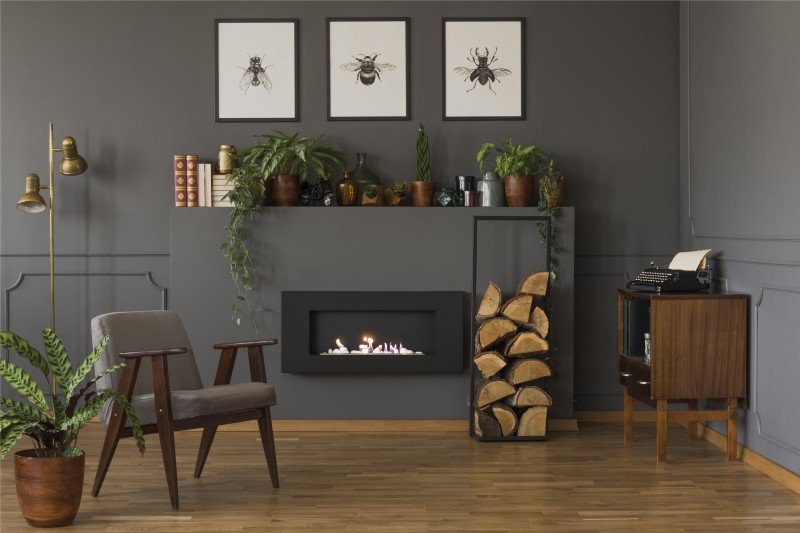Fireplaces in the UK: A Comprehensive Guide
Fireplaces have long been an essential part of British homes, offering both aesthetic charm and practical warmth. As Cozy Fireplaces turns chilly, the attraction of a cozy fire beckons, transforming any living area into a sanctuary. In this post, we will check out the different kinds of fireplaces available in the UK, considerations for setup, maintenance tips, and responses to frequently asked concerns about fireplaces.
Kinds of Fireplaces
When picking a fireplace for a UK home, a number of alternatives are offered, each with distinct features and advantages. The following table summarizes the main types of fireplaces popular in the UK:
| Fireplace Type | Description | Pros | Cons |
|---|---|---|---|
| Open Hearth | Traditional fireplaces that burn wood or coal, offering a rustic feel. | Authentic ambiance; fantastic heat circulation | Less energy-efficient; requires chimney maintenance |
| Gas Fireplaces | Use natural gas or lp; can be direct vent or ventless. | Immediate heat; easy to operate; cleaner burning | Preliminary setup cost; might require gas line |
| Electric Fireplaces | Mimic a flame utilizing LED lights and offer heat through electrical energy. | Safe; simple to set up; no flue required | Less genuine; greater operating expenses |
| Wood-burning Stoves | Closed-system fireplaces that burn logs, providing high performance. | High heat output; eco-friendly when using sustainable wood | Limited aesthetic compared to open hearth |
| Bioethanol Fireplaces | Eco-friendly choice that burns bioethanol, creating real flames. | No chimney needed; flexible style choices | Can be pricey to operate; limited heat output |
Advantages and disadvantages of Each Type
Open Hearth
- Pros:
- Provides character to any home.
- Efficient heat distribution due to open flames.
- Cons:
- Less energy-efficient and more smoke than modern alternatives.
- Requires regular cleaning and maintenance of the chimney.
Gas Fireplaces
- Pros:
- Easy to manage and run with the flick of a switch.
- Cleaner alternative with less soot accumulation.
- Cons:
- Requires a gas supply and installation costs can be high.
- May not offer the exact same ambiance as a traditional fire.
Electric Fireplaces
- Pros:
- Simple setup without any chimney or flue required.
- Comes in numerous styles, resembling traditional options.
- Cons:
- Lacks the realism of real flames and can end up being pricey with continuous usage.
Wood-burning Stoves
- Pros:
- Highly efficient and produces significant heat.
- Eco-friendly resource when using responsibly sourced wood.
- Cons:
- Requires extra space for log storage and regular upkeep.
Bioethanol Fireplaces
- Pros:
- Flexible positioning due to no requirement for traditional venting.
- Clean-burning and minimal effect on indoor air quality.
- Cons:
- Can be less economical for continual usage compared to gas or wood.
- Heat output is less effective for larger spaces.
Installation Considerations
When installing a fireplace in a UK home, numerous factors must be taken into account:
- Building Regulations: Ensure compliance with local building codes and security policies.
- Chimney and Flue: Determine the need for a chimney or flue system based on the kind of fireplace picked.
- Ventilation: Proper ventilation is crucial for safety, especially with gas, wood, and bioethanol options.
- Area: Consider the very best location for the fireplace to take full advantage of heat distribution and aesthetic appeal.
- Expert Help: Engaging a professional installer can make sure a safe and accurate setup tailored to the specific type of fireplace.
Upkeep Tips
Regular upkeep of a fireplace is vital for both safety and performance. Follow these guidelines to keep your fireplace in peak condition:
- Chimney Sweeping: Have your chimney professionally swept at least when a year to prevent blockages and reduce fire danger.
- Check for Damage: Regularly check for leakages, cracks, or damage, especially in gas and wood-burning fireplaces.
- Tidy the Surroundings: Ensure the area around the fireplace is complimentary from dust and combustible materials.
- Check Carbon Monoxide Detectors: Test detectors routinely, particularly in homes with gas-burning devices.
- Shop Wood Properly: If utilizing a wood-burning stove, shop wood in a dry location to decrease wetness content.
Frequently Asked Questions
What is the best kind of fireplace for a small space?
For small areas, electric fireplaces or bioethanol models are often advised due to their smaller size, safety features, and aesthetic appeals.
Are electric fireplaces more affordable to run than gas?
Electric fireplaces normally have a lower in advance cost, but depending upon electrical power rates, they can be more pricey to run long term compared to gas.
Do wood-burning stoves need a lot of upkeep?
While they do need some upkeep, such as cleaning and regular chimney sweeps, numerous homeowners find that modern wood-burning ranges are effective and reasonably low upkeep compared to traditional open hearths.
Can I set up a gas fireplace myself?
While some homeowners may try DIY setup, it is highly suggested to work with an expert for gas fireplace installations due to safety concerns and regulatory compliance.
How can I make the most of the heat output of my fireplace?
To take full advantage of heat output from any fireplace, think about the following:
- Keep windows and doors closed throughout use.
- Use heat-efficient logs or fuels.
- Make sure proper airflow around the fire.
- Use fans or blowers that can circulate warm air throughout the space.
Fireplaces stay a valued aspect within UK homes, supplying warmth, beauty, and an inviting environment. Given the range of options and their special functions, homeowners can pick the best fireplace to match their home while making sure safety and performance. With regular upkeep and a clear understanding of the installation requirements, any person can delight in the charm and comfort of a fireplace for many years to come.

